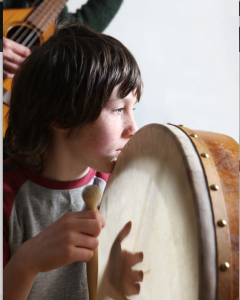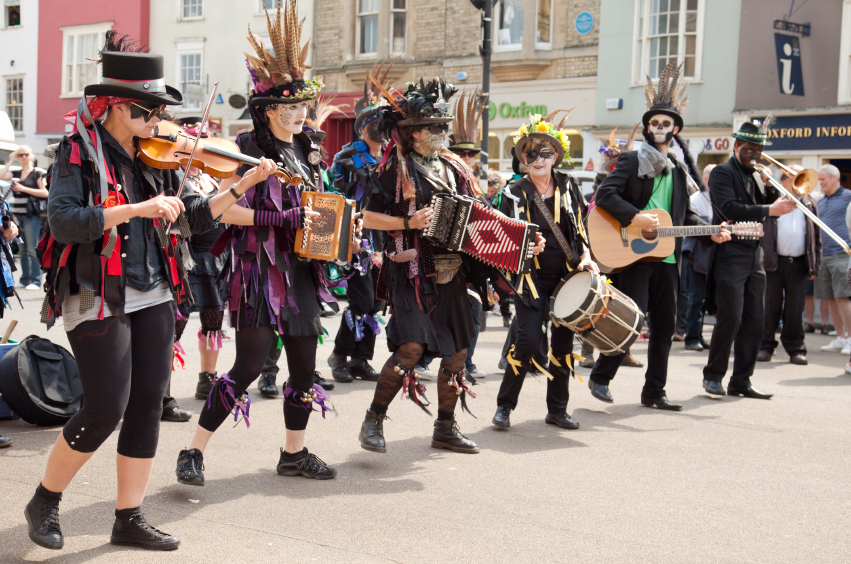The world cup is coming up and who doesn’t love to cheer on their favorite sports team with a mighty blast of a honking horn? Whether you’re a soccer fan or just want to make some joyful noise, it’s easy to create your own homemade horn that looks a lot like the vuvuzelas used in soccer matches around the world!
What’s a Vuvuzela?
Although it’s now a common site at soccer matches all over the globe, it’s hard to tell exactly how the vuvuzela was invented. One South African soccer fan claims  he invented the vuvuzela by reshaping a bicycle horn into a mightier instrument and there are pictures from the 1950’s and 1960’s that prove it. Later, the vuvuzela was used as part of worship in South African churches but this type of stadium horn clearly took center stage when the world cup came to South Africa. Dozens of reporter from around the globe declared their love (or hatred) of this new musical fad!
he invented the vuvuzela by reshaping a bicycle horn into a mightier instrument and there are pictures from the 1950’s and 1960’s that prove it. Later, the vuvuzela was used as part of worship in South African churches but this type of stadium horn clearly took center stage when the world cup came to South Africa. Dozens of reporter from around the globe declared their love (or hatred) of this new musical fad!
A Real Vuvuzela Is Loud!
 Real vuvuzelas are incredibly loud and are actually banned from some public areas in South Africa for that reason. They are also rather big – some more than 18 or 24 inches long! Thankfully, kids versions are smaller, quieter and some even come as plastic, collapsible horns that can be easily taken to a local game or sports events.
Real vuvuzelas are incredibly loud and are actually banned from some public areas in South Africa for that reason. They are also rather big – some more than 18 or 24 inches long! Thankfully, kids versions are smaller, quieter and some even come as plastic, collapsible horns that can be easily taken to a local game or sports events.
Make Your Own Vuvuzela
Can’t find a vuvu near you? Then make your own version out of some basic materials from around the house. Here’s what you need:
Plastic cup
Cardboard roll from paper towels
Manilla folder
Sturdy tape and
Materials for decoration
 You can find step-by-step directions in the craft pdf below, but it’s quite easy. The plastic cup becomes the bell of the horn and fits into the cardboard roll. You’ll add a bit of manilla folder to fill out the horn and then decorate with your favorite colors or emblems from the team of your choice. Then, you play.
You can find step-by-step directions in the craft pdf below, but it’s quite easy. The plastic cup becomes the bell of the horn and fits into the cardboard roll. You’ll add a bit of manilla folder to fill out the horn and then decorate with your favorite colors or emblems from the team of your choice. Then, you play.
Check out the free craft pdf’s below for playing tips as well. And get ready for a good, hearty hoooonnnnk!
Win A Vuvuzela Plus a World Cup Activity Pack from KBN
On June 5th, my friends from Kid Blogger Network will give away a pack of world cup activities and prizes. I’ll donate the plastic vuvuzela, so you can win one of your own. Check back to this blog to get word of when the contest is live or subscribe to my feed to never miss a new musical post!
Make A Vuvuzela Craft Activity – Free From TeachersPayTeachers (Follow me on TPT!) http://www.teacherspayteachers.com/Product/The-Vuvuzela-Make-Play-Your-Own-South-African-Stadium-Horn-1242716






































